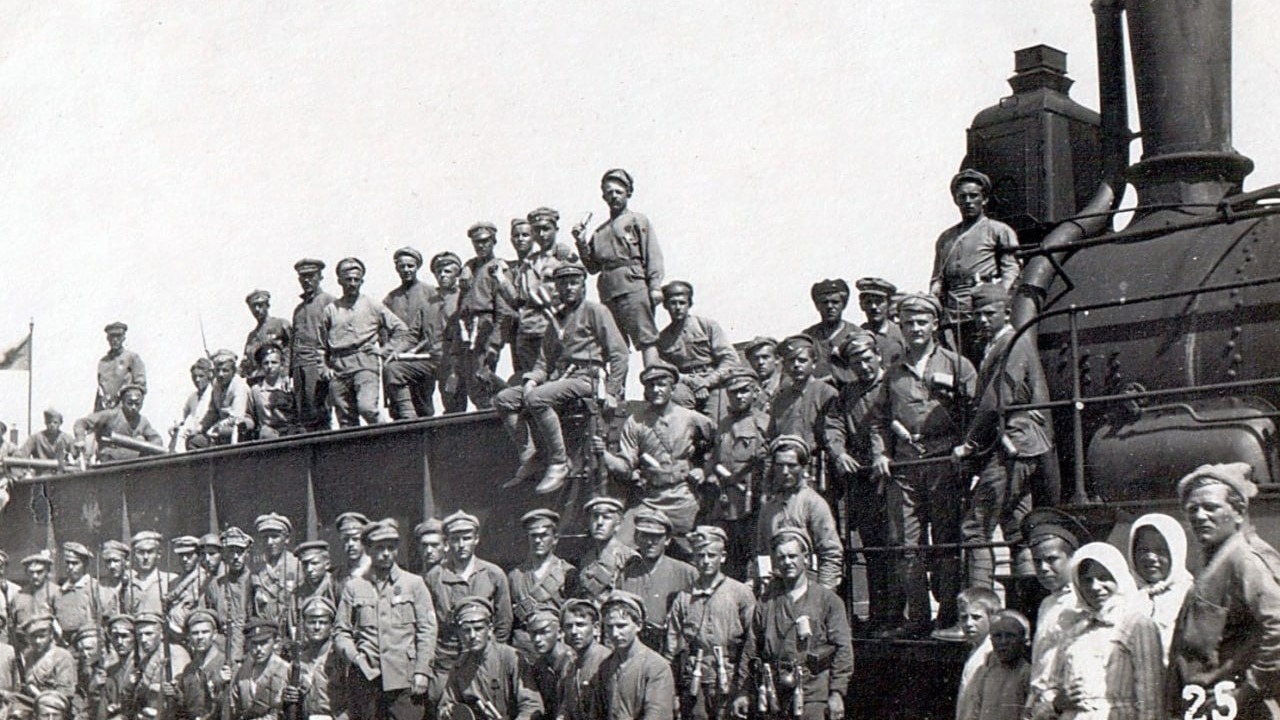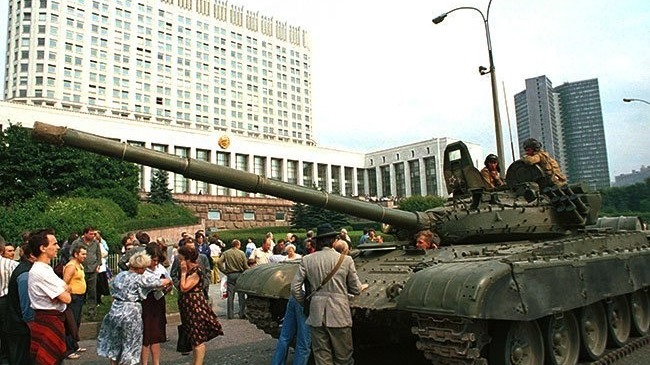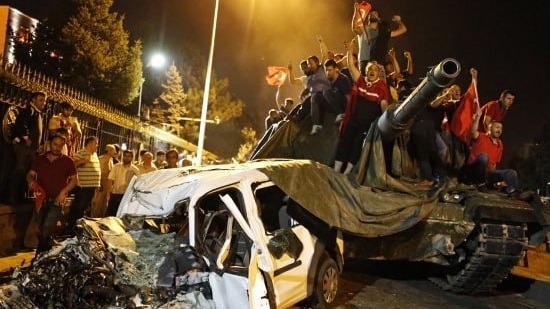Posted 24 июня 2023, 12:46
Published 24 июня 2023, 12:46
Modified 27 июня 2023, 08:13
Updated 27 июня 2023, 08:13

Once in a hundred years they shoot at their own people. What the history of military uprisings in Russia teaches us
The history of armed uprisings in Russia — from the Czechoslovak Corps to the Wagner PMCs
PMCs «Wagner» is no stranger to uprisings and coups. This is their specialization, and the experience was gained in African countries. It was there that PMCs, not only Russian ones, received the greatest use of their abilities. The Wagner PMCs helped local political and military leaders establish control over the CAR, then over Mali, and in early 2023 over Burkino Faso, displacing French forces. In general, Prigozhin's fighters have the experience of changing power in a separate government.
Africa has become the center of military coups and civil conflicts over the past 100 years. But if armed rebellions there always came from outside, then in In Russia and the states close to it, such stories were most often of an internal political nature. The time of princely feuds, it would seem, remained on the pages of the history textbook. But as they say now, since the beginning of its February 24, 2022, we have been living in this textbook, so today the desire to deal with political influence by force is no longer surprising.
For example, Dmitry Zhuravlev, Director General of the Institute of Regional Problems, sees parallels between the First World War and current events.
— Prigozhin's speech reminds me of Muravyov's speech in 1918. There was such a commander of the Eastern Front. He did not accept the Brest Peace out of good intentions and rebelled. This meant another war in terms of negotiations with the Germans. The Brest Treaty would have been changed, and the border would have passed through Smolensk. I do not know whether Prigozhin is right or wrong in his accusations against Shoigu. In any case, this is something that should not be allowed.
«NI» analyzed how the military uprisings originated and how they ended in Russia and not only.
The Uprising of the Czechoslovak Corps
During the First World War in A national volunteer military unit appeared in Russia, consisting mainly of Czechs and Slovaks living on the territory of the Russian Empire. On the one hand, he was part of the Russian Army, and on the other hand, since January 1918, he was subordinate to the French command. The future head of Czechoslovakia, Tomas Masaryk, called the corps an «autonomous army.» That is, he had a rather ambiguous system of subordination and management — that's literally like a PMCs in a special operation.
After the revolution, the Czechoslovak National Council (CSNS) established its branch in Russia, which was recognized by the Provisional Government as the representative of the Czechs and Slovaks in Russia. So an entire army was formed, the main goal of which was to create a state independent of Austria-Hungary. But the October Revolution and the negotiations of the authorities for peace with the participants of the Triple Alliance put their goals at risk.
The main aspiration for the Czechoslovak corps, which depends on French funding, was not to defend Russia, but an attempt to move to France via the Trans-Siberian Railway to Vladivostok and further by sea. The conflict with the authorities arose on the way to the east after the People's Commissar for Foreign Affairs Chicherin forbade Czechoslovak detachments to move to the east after Germany's demand to begin the evacuation of German prisoners from the Far East to the European part of Russia.
In response, the Czechoslovak army… no, did not go to bomb Voronezh. And during the conflict it captured Syzran, Kuznetsk, Yekaterinburg, Irkutsk, Chita and Vladivostok. The echelons of the Czechoslovaks slowed down the advance to the east by the echelons of Admiral Kolchak with the general staff and the gold reserve. It all ended with the retreat of the Czechoslovak army and the transfer of legionnaires to Europe only in December 1919. The Czechs and Slovaks lost more than four thousand people dead and missing. Losses on the part of the Red Army during this conflict have not been disclosed so far.


The Kronstadt Mutiny
The revolution of 1917 and the Civil War led to a series of riots and rebellions. The Kronstadt uprising in 1921 could have the most far-reaching consequences, since sailors, not peasants and workers, took part in it. The sailors of the Baltic Fleet came under the influence of anarcho-Socialist Revolutionary leaders who put forward the slogan «Soviets without Communists.» Ordinary sailors and soldiers were attracted by a more specific demand to abandon the prodrazverstki.
The number of sailors was 27 thousand people — a little more than 25 thousand. «Wagnerians», about whom Yevgeny Prigozhin spoke yesterday. The sailors and soldiers had at their disposal the main base of the Baltic Fleet, 2 battleships, other ships, 140 coastal defense guns, over 100 machine guns.
The number of troops sent to suppress the rebellion was brought to 45 thousand people in a week. 10 days after the start of the uprising, the Red Army units entered the city and began a sweep. During the assault, about 1 thousand sailors were killed and 2.5 thousand wounded. The Soviet troops were able to suppress the mutiny, but lost 527 people killed and 3285 people wounded.


The August Putsch
The crisis of August 18-21, 1991 was also an attempt to commit a coup with the participation of the military. The State Committee for the State of Emergency (GKChP) has officially set itself the task of preventing the collapse of the USSR and the signing of a new union treaty creating a Union of Sovereign States.
The GKCHP relied on the forces of the Alpha special forces, the 27th Separate Motorized Rifle Brigade of the KGB of the USSR, the OMON and the Division named after him. Dzerzhinsky Ministry of Internal Affairs of the USSR, 106th Guards Tula Airborne Division, Taman Motorized Rifle Division, Kantemirov tank Division. 4 thousand servicemen, 362 tanks, 427 armored personnel carriers and infantry fighting vehicles arrived in Moscow.
If in 1991 military equipment approached the government building in Moscow, the first thing the Wagner PMCs of Yevgeny Prigozhin surrounded the headquarters in Rostov-on-Don. In 1991, «Swan Lake» was constantly being played on television, and now Prigozhin's statements are simply being removed from VK. The coup in 1991 did not receive support either among the population or among foreign politicians, and Defense Minister Dmitry Yazov on the third day ordered the withdrawal of troops from Moscow.
The dry result of human casualties: during the coup in Moscow, 3 civilians were killed protecting the entrances to the Government house from the military.


Russia has been without rebels for a century, except for the relatively bloodless August coup. But the last fifty years have not been quiet not only in Africa. There were also military rebellions, some of which proved successful. They turned into real coups and displaced the current government.
Military coup in Greece
One of the few cases of a successful military coup outside Africa and Central America is the coming to power of the «black colonels» in Greece in 1967. Formally, Brigadier General Stylianos Pattakos, as well as Colonels Georgios Papadopoulos and Nicholas Makarezos opposed the «communist conspiracy» in official circles. But in fact, the result of the coup was the abolition of the power of King Constantine II of Greece.
The coup took place quickly: tanks were brought into Athens, paratroopers seized the Ministry of Defense, arrests of oppositionists were carried out. The power passed into the hands of the junta by the morning of the next day. The junta's rule lasted for 7 years — until 1974. Then Papadopolous was charged with treason, torture, and rebellion. He was sentenced to death, which was later commuted to life imprisonment.


Military coup in Turkey
From recent history, it is worth noting the attempted military coup in Turkey in 2016. The events lasted less than a day — from the evening of July 15 to the morning of July 16. High-ranking military men have launched a mutiny in order to preserve their posts. The hotel in Marmaris, where Recep Erdogan was resting, was stormed, F-16 fighters carried out an airstrike on the presidential palace and the parliament building, the same buildings were stormed by tanks. The airports of Istanbul and Ankara, the bridge over the Bosphorus Strait came under the control of the putschists.
The coup failed due to the fact that the police and other part of the army remained under the control of the current authorities and resisted. More than 200 people were killed and more than 2,000 were injured.


Anyway, the world knows a lot of people who gained power during military coups and rebellions. Here are the names of some of them. Muammar Gaddafi in Libya, Hafez Assad in Syria (Bashar Assad is his son), Augusto Pinochet in Chile, Omar Bashir in Sudan — all of them raised the army to revolt.